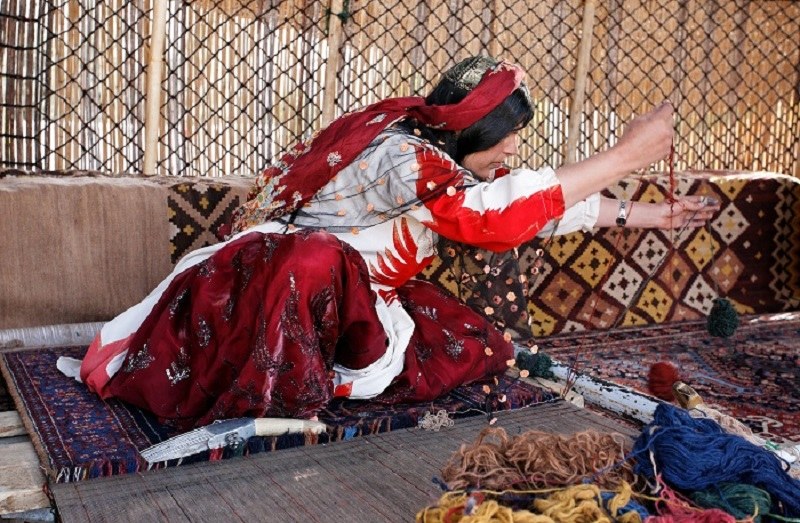
The traditional skills of carpet weaving in Fars Province of Iran are the intangible cultural heritage of Iranians in central Iran. This province (Fars or Persia) is considered the region of Narenj-o-Toranj, meaning “Orange and bergamot”. It refers to the traditional motifs as well as the agricultural products of the region.
Tent-dwelling nomads constitute approximately one-third of the population in the province. They make a living through animal husbandry. The traditional skills of carpet weaving in Fars province produce Fars carpets. This is the souvenir of this province made by nomads called Qashqais.
As Fars province is a region with high altitudes and low lands, there can be moderate livable climate and beautiful surroundings in some corners of it during most times of the year. For nomads, this means a motivation to migrate to better places in particular seasons.
Such an environment has inspired local people to create such works of art as Fars carpets and rugs, known as Shirazi carpets. Today, due to the large international demands, it’s regarded as an ideal item to export to other countries.
Skills of Carpet Weaving in Fars throughout History
According to historic documents and pieces of evidence, the traditional skills of carpet weaving has been common in Fars province for 12 centuries. The oldest document confirming the existence of this intangible cultural heritage is found at the list of Harun al-Rashid’s treasury asset back in the first half of the 9th century. It mentions some items like Caliph’s carpet, Armenian Hezar Basat, Darabjerd Hezar Basat, Tabiri Pansad Basat, and Mishan Plain Sisad Basat.
Features of Fars Carpets
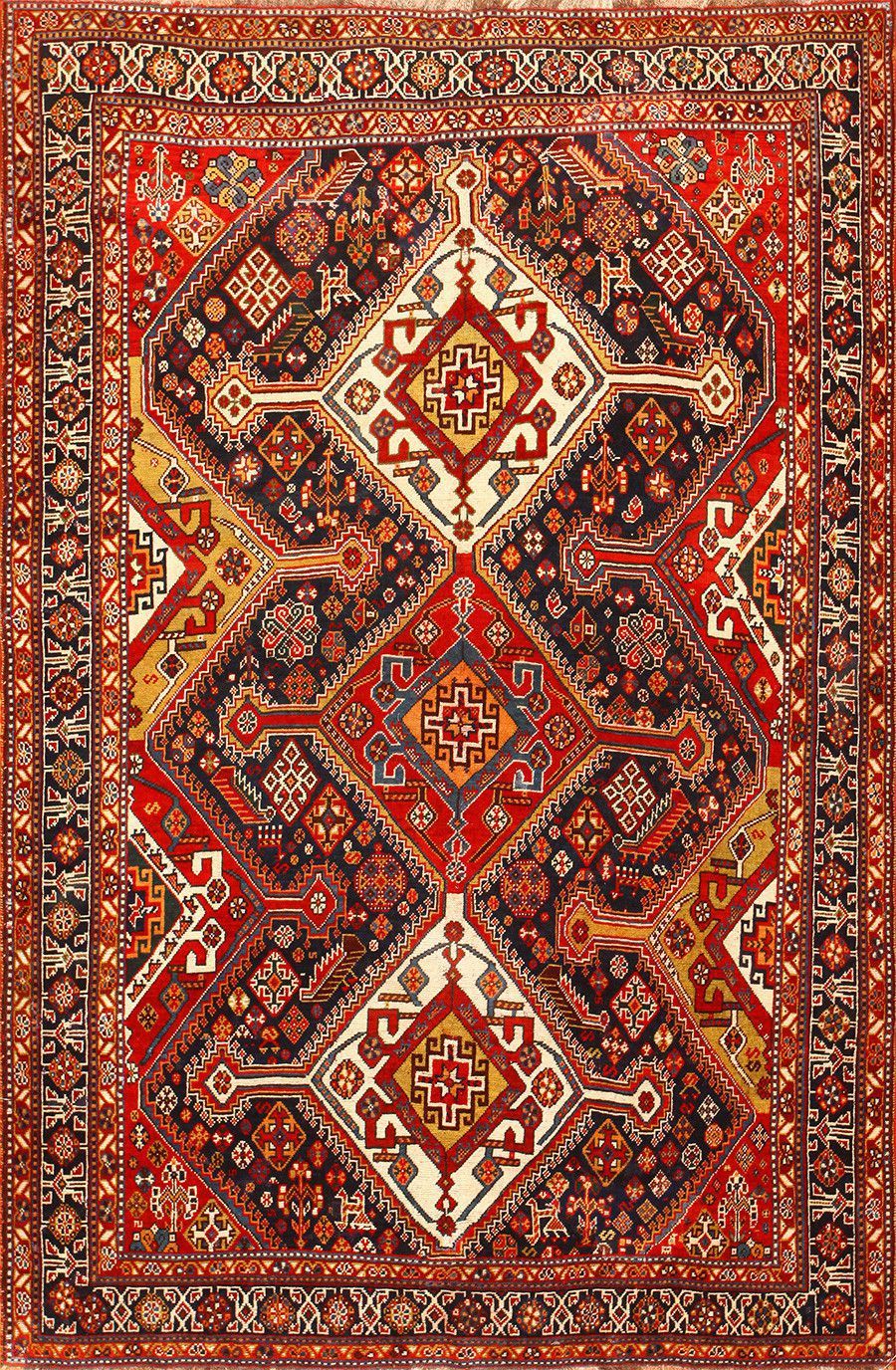
There are several common features found in Fars carpets. They are all of:
- Some average weight,
- Soft and fine,
- The dominance of less bright colors,
- Margins of up to seven layers,
- The dominance of angular patterns to curvy ones,
- The presence of kilim-style woven edges in blue, red and chestnut colors particularly in old pieces, and
- The presence of three connected toranj shapes (lozenge) in the middle without corner pieces.
On the other hand, certain features distinguish Fars carpets from the carpets of other regions of Iran. One of the exclusive features one can find in Fars Province rugs is the material used for the warp yarns that are totally made of wool. If the warp yarns are made of silk, they don’t dye them. Therefore, they appear in their original color. Only in some mountain areas (Darab, Abadeh, Faragheh, Eqleed, and some part of Neyriz) where some fine carpets are woven, both warp and weft are made of cotton.
Different Types of Persian (Fars) Carpets
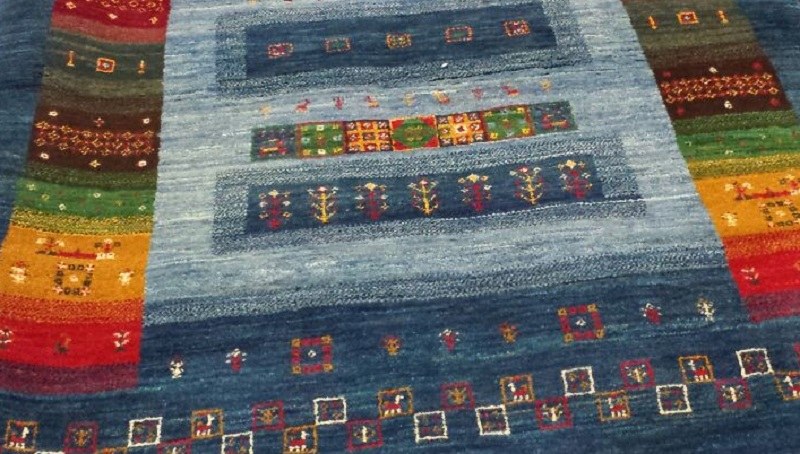
The exclusive traditional skills of carpet weaving of Fars are the local people’s legacy manifested in various types and appearances. Generally, carpets are made in a two-weft style, but some other carpets are made in single-weft style in rural areas. They are called “Gabeh”. Such carpets aren’t so soft due to their single-weft weaving style, but they’re very durable.
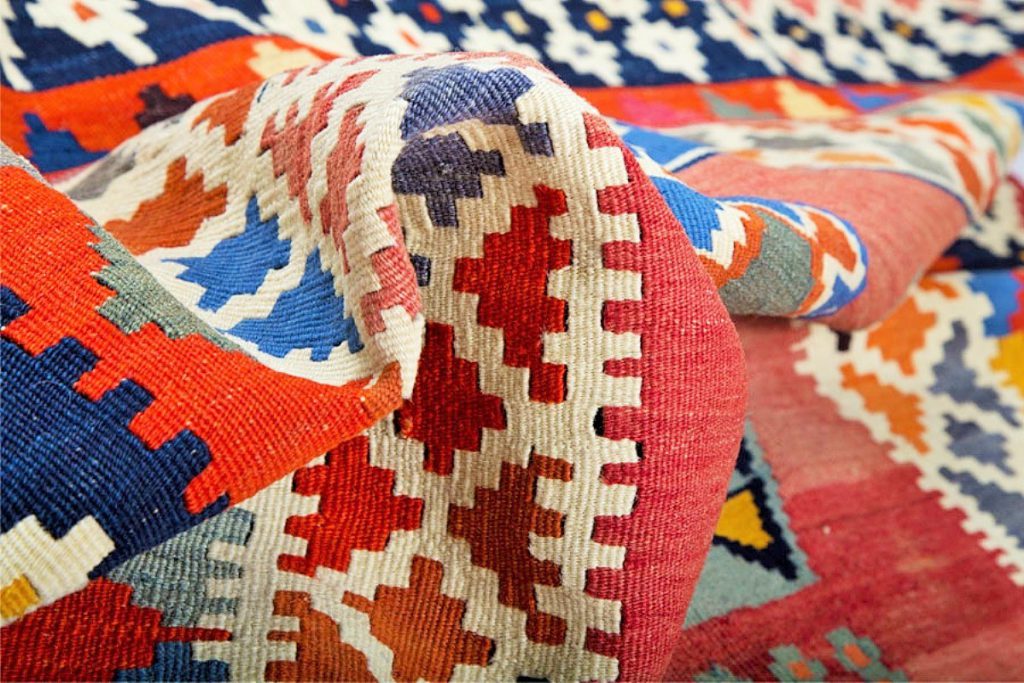
Another type of Persian rugs is called “Kilim” and “Jajim”. They are made of varied warp yarn colors which create colorful motifs and patterns. Jajims are usually made in striped patterns with narrow lines. Sometimes, two woven pieces are eventually woven together with the stripes.
Fars Province Carpets, the Souvenirs of Nomadic Ladies
Most of the Iranian carpets are made with imaginary designs. In other words, they are made without a printed design. Therefore, they’re more natural than perfectly symmetrical.
Sometimes, while migrating, nomads carry the weaving looms from one spot to another and set them up again to continue weaving. The first carpet, known as “Dastoor”, is used as a model to begin weaving the next ones. So, in case any loom re-setup is needed, a model is already there.
All these subtle techniques, tips and tricks are handled by women among nomads. They are in charge of keeping these traditional skills and transferring them to the next generations.
Fars Carpets: Design & Weaving Style
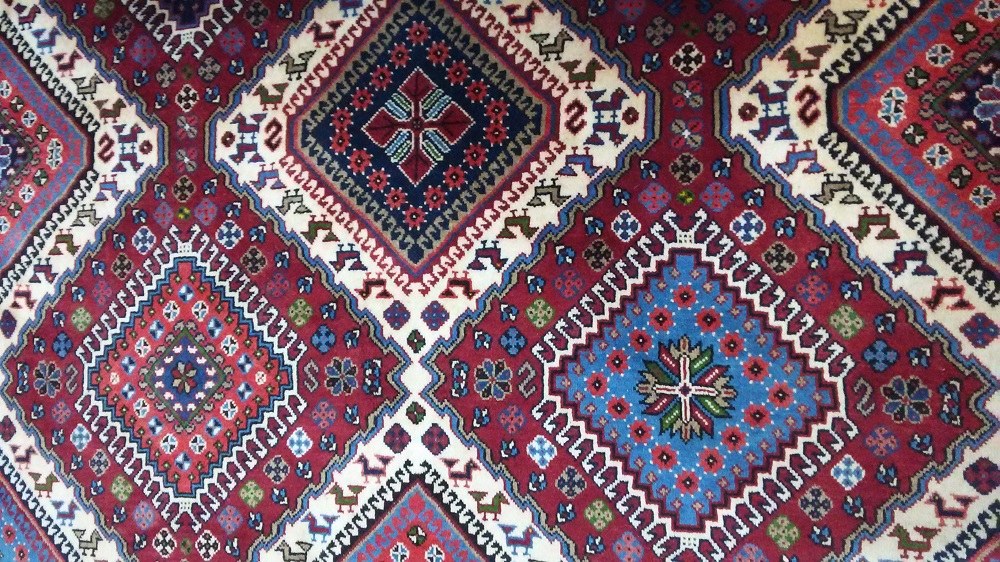
Some of the experts are of the opinion that Qashqai carpet designs are in fact categorized into two groups:
- Traditional designs, which are angular in shape and woven without a printed design already provided,
- Orderly designs, which are symmetrically devised.
Non-experts believe there are ten groups of Fars carpets. Of course, the categorized list below is the simplified one that doesn’t include sub-categories, etc. Here they are:
- Chicken pattern & chicken-head design
- Plant design
- Aigrette design
- Animal design
- The Sun’s wheel components design
- Various floral design
- Star design
- Checkered design
- Dented fish-and-leave design
- Lozenge design with four-armed arrays
The traditional skills of carpet weaving in Fars Province of Iran are divided into two methods: “Lul” and “Takht”. Most of Qashqai nomads tend to weave Lul or half-Lul style carpets. Takht-style carpets don’t look very straight when spread on the ground due to their softness.
A distinguishing feature of all nomadic carpet weaving styles all around Iran has always been the use of the horizontal loom. However, in recent decades, some of the traders have preferred to provide standing looms for the weavers producing these works of art for them.
Look & Feel of Persian Carpets Woven in Fars
By watching details of a carpet, one is drowned in a world of enthralling beauty. By visiting a carpet weaving workshop or rooms where Qashqai women are working, one feels entering a world of mesmerizing motifs and colors. The traditional skills of carpet weaving in Fars province is an intangible cultural heritage out of many inscribed in UNESCO’s list. It reflects part of the ancient culture of a nation whose history is one of the oldest on this planet.
For more articles on Iranian culture inscribed in UNESCO, go to:


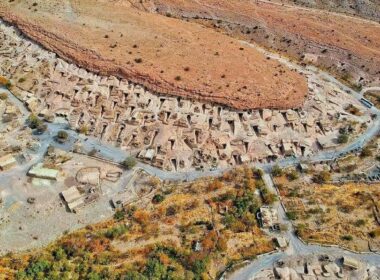



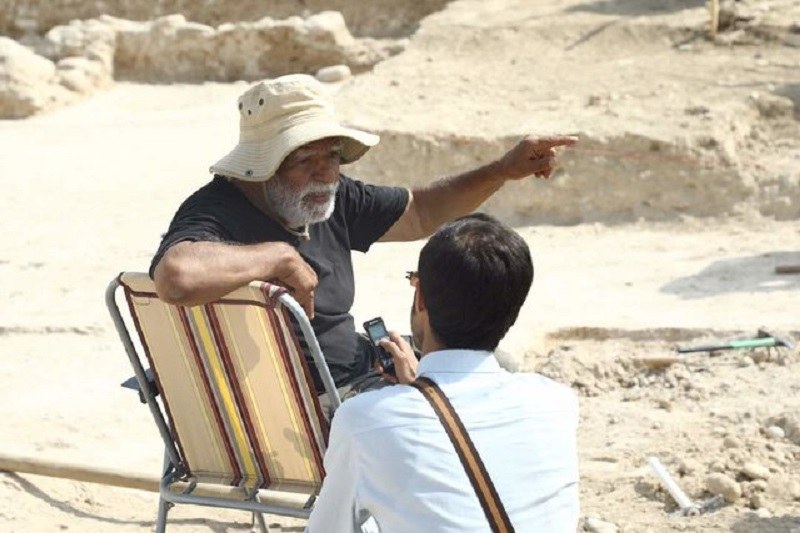
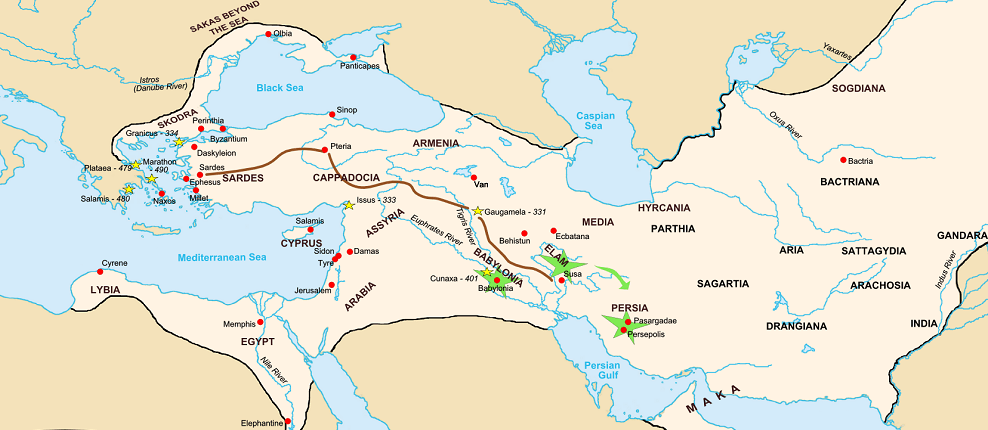
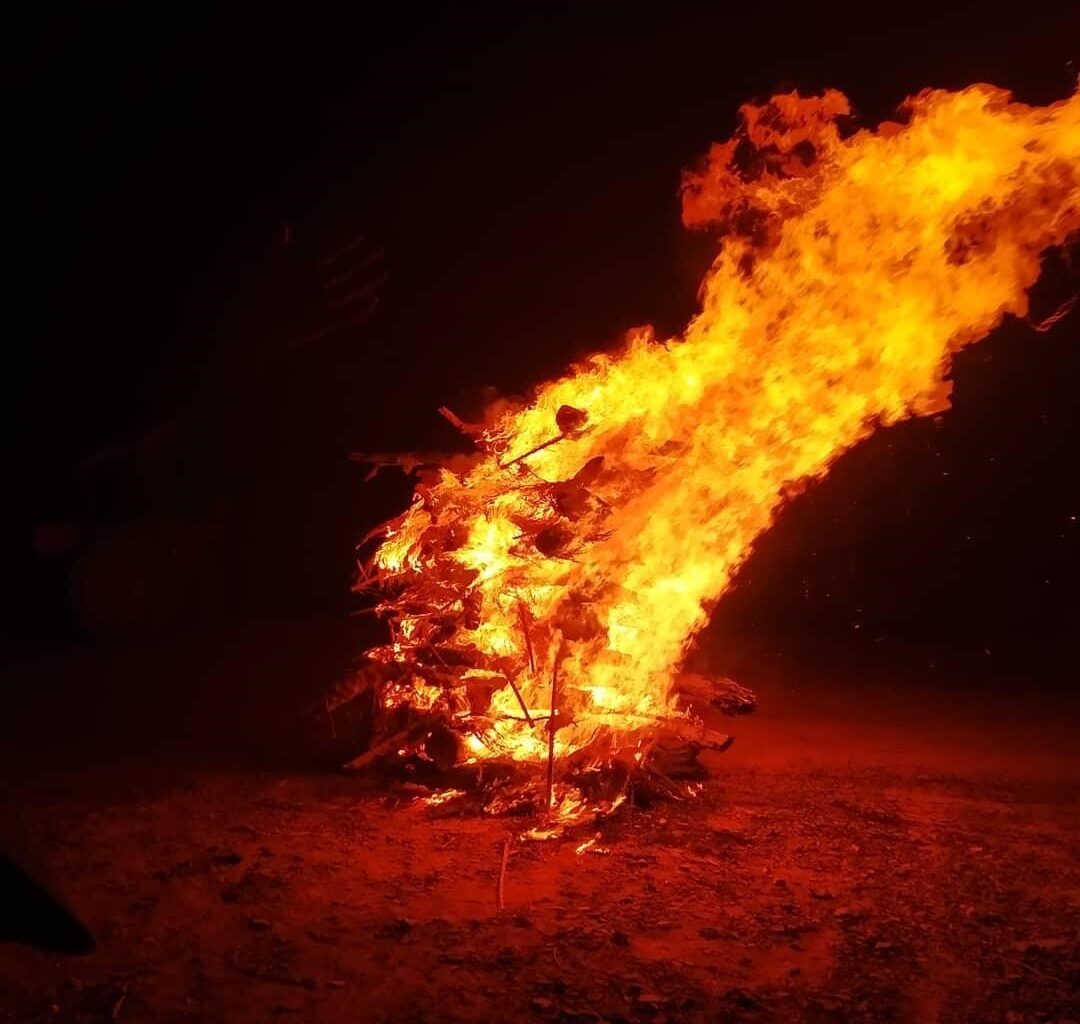
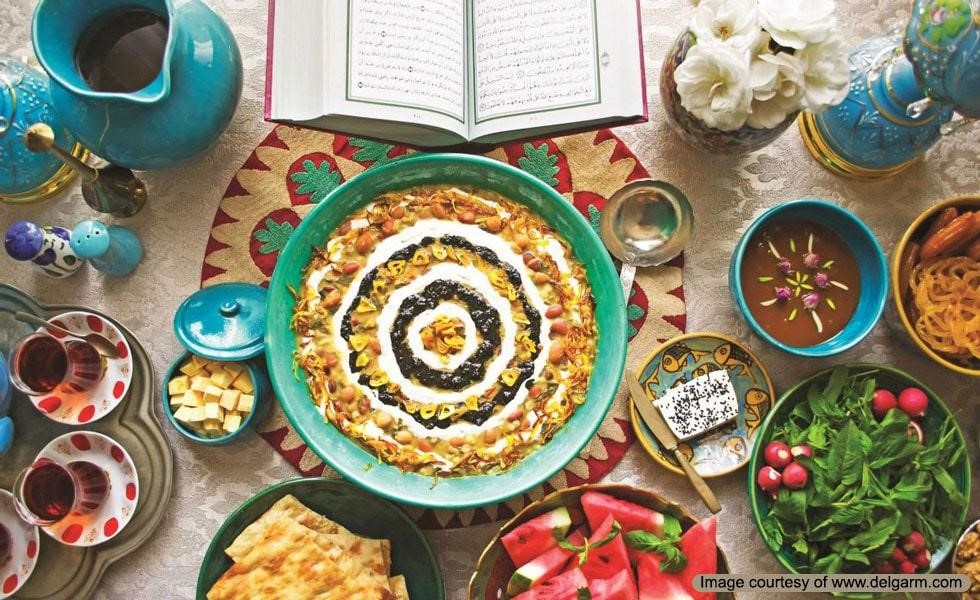
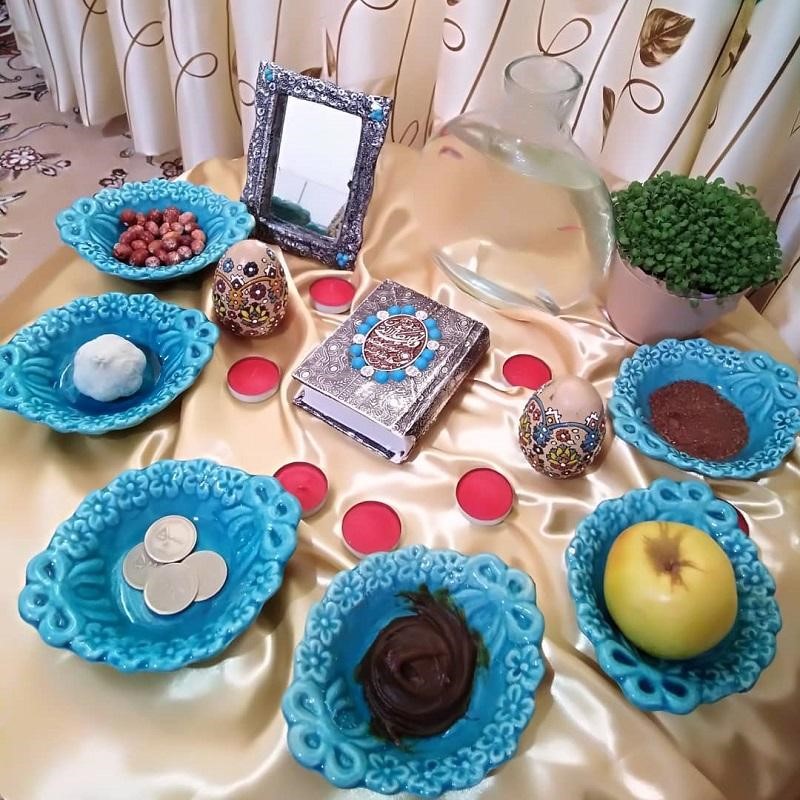
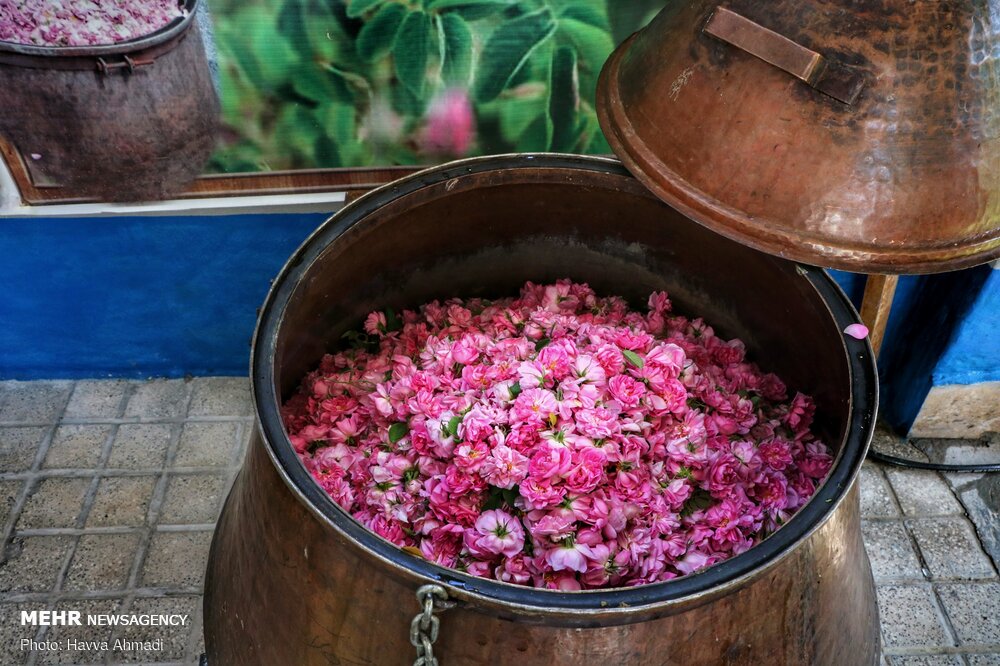



Those are some really beautiful carpets. 🙂